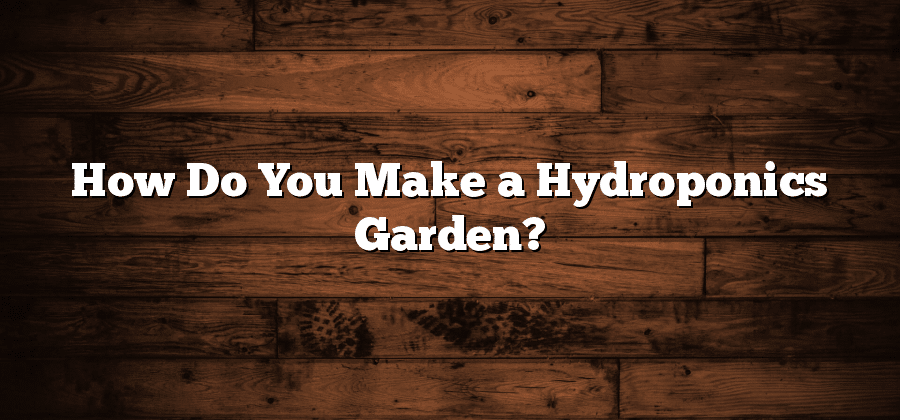Benefits of Hydroponics Gardening
Hydroponics gardening offers several benefits that make it an attractive option for both seasoned gardeners and beginners alike. One of the key advantages is the ability to grow plants in a controlled environment, free from the constraints of soil. This method allows for greater control over crucial factors such as nutrient levels, pH balance, and water distribution. As a result, plants can grow and thrive more efficiently, often producing higher yields and healthier crops. Additionally, hydroponics gardening requires less space, making it a viable option for urban dwellers or those with limited outdoor areas. This means that individuals can enjoy the benefits of gardening, even in apartment buildings or high-rise settings.
Furthermore, hydroponics gardening can be more environmentally friendly compared to traditional soil-based methods. Without the need for soil, there is less risk of nutrient runoff or soil erosion, which can have harmful effects on nearby waterways. In a hydroponic system, **nutrient solution** is carefully measured and directed to the plants, ensuring that they receive the necessary nutrients without any excess waste. Additionally, hydroponics gardening uses less water compared to traditional gardening methods, as water is recirculated within the system rather than being absorbed by the soil. This not only conserves water but also reduces the overall water bill for gardeners.
Choosing the Right Hydroponic System
Hydroponic gardening is an innovative technique that allows plants to grow without soil. It relies on a nutrient-rich solution that bathes the plant roots, providing them with all the necessary nutrients for healthy growth. When it comes to selecting the right hydroponic system, there are several factors to consider.
One important factor to consider is the type of plants you want to grow. Different plants have different requirements, so it’s essential to choose a system that can meet their specific needs. For instance, some plants may require a continuous flow of nutrient solution, while others may prefer intermittent feeding. Additionally, the size and growth rate of your plants should also be taken into account. Larger plants will need a system with a larger reservoir and more robust infrastructure to support their growth. It’s crucial to research and understand the specific requirements of your chosen plants before settling on a hydroponic system.
Another consideration when choosing the right hydroponic system is the level of experience and expertise you have in hydroponic gardening. Some systems are more complex and require a higher level of skill to set up and maintain. If you’re a beginner or have limited experience, it’s advisable to start with a simpler system, such as a wick or water culture system. These systems are relatively easy to assemble and require minimal maintenance. As you gain confidence and experience, you can then progress to more advanced systems, such as nutrient film technique or aeroponics. It’s always important to start with a system that matches your skill level to ensure success and avoid unnecessary complications.
Selecting the Perfect Location for Your Garden
When it comes to hydroponic gardening, selecting the perfect location for your garden is crucial to ensure the success of your plants. Consider factors such as sunlight, temperature, and accessibility to create an optimal environment for your hydroponic system.
First and foremost, **sunlight** is essential for the growth and development of plants. Choose a location that receives ample amounts of natural light throughout the day. Ideally, your hydroponic garden should be exposed to a minimum of six hours of direct sunlight. This can be achieved by placing your garden near a window or in an area with unobstructed access to sunlight. Keep in mind that different plants may have varying light requirements, so it’s important to research and understand the specific needs of the crops you intend to grow.
Preparing the Hydroponic Growing Medium
When it comes to hydroponic gardening, one of the key elements that determine the success of your plants is the growing medium. Unlike traditional soil-based gardening, where plants get their nutrients and support from the soil, hydroponic plants rely on a different growing medium. This medium serves as a support for the roots and helps deliver nutrients directly to the plant. Preparing the hydroponic growing medium is an essential step in creating a thriving hydroponic garden.
There are several types of hydroponic growing mediums available, each with its own benefits and disadvantages. Some popular options include perlite, vermiculite, coconut coir, and rock wool. Before deciding on the best medium for your hydroponic garden, consider factors such as water retention, aeration, and pH stability. Additionally, it’s important to ensure that the growing medium is clean and free from contaminants that could harm your plants. To prepare the hydroponic growing medium, start by washing it thoroughly to remove any debris or impurities. This will help create a clean and healthy environment for your hydroponic plants to thrive in.






